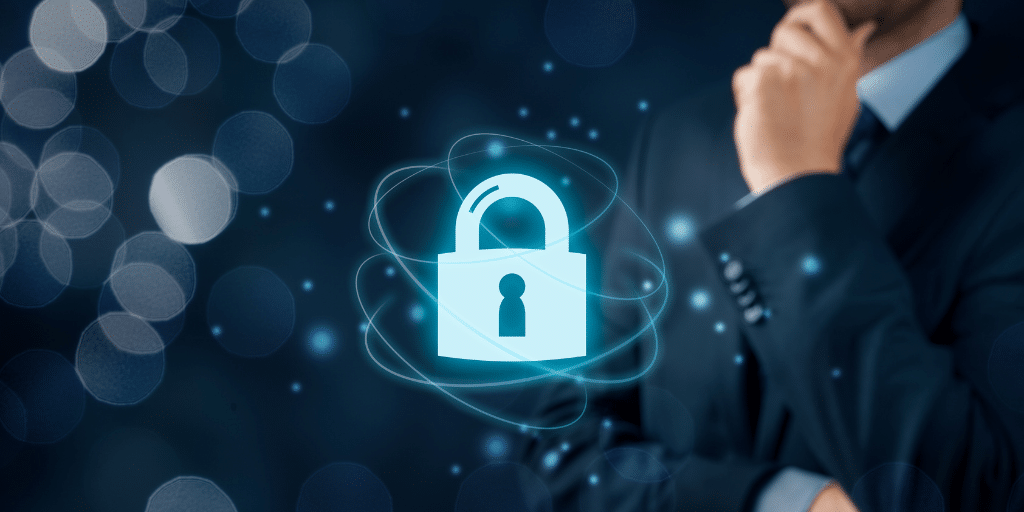Is Your Law Firm Prepared for a Cybersecurity Breach?

Cybersecurity breaches are an ever-present threat for all businesses, but for law firms, the stakes are incredibly high. With sensitive client data and your firm’s reputation on the line, preparation for such an event is imperative.
As cyberattacks grow more sophisticated and costly – sometimes reaching into the millions and even billions of dollars – staying informed is your best defense. Arm yourself with the knowledge to mitigate risks and protect your firm against potential threats.
In this article, we’ll delve into what a cybersecurity breach entails, the potential impact on your practice, and proactive steps you can take to protect your data and that of your clients.
What is a Cybersecurity Breach?
A cybersecurity breach occurs when an unauthorized party gains access to sensitive or confidential information.
There are many types of breaches and threats out there, including data breaches, ransomware attacks, phishing, social engineering, denial of service (DoS), distributed denial of service (DDoS) attacks, and more.
Common causes of security breaches can include weak passwords, software vulnerabilities, lack of security updates, and, above all, human error.
What Are Common Losses in a Cybersecurity Breach?
First and foremost, if you own a business, you are a target. It is dangerous to think you’re immune to cyber-criminals.
A cyber security breach can cause:
- Financial losses
- Reputational damage
- Operational disruptions
- Data theft and privacy violations
- Intellectual property theft
- And more
Any one of these effects can result in the total loss of your law firm.
According to Forbes Advisor, data breaches have increased by 72% since 2021, a significant rise that is expected to continue.
Additionally, the FBI’s Internet Crime Complaint Center reported that more than 880,000 complaints were made in 2023 by cyber-crime victims in the US alone. The reported losses totaled over $12.5 billion, a 22% increase from 2022.
We can share more statistics, but many still think the worst won’t happen to them.
The basic facts are:
- No one is immune.
- Everyone is a potential target.
- The losses are unbelievable.
Combating the Human Error Factor
What is the number one reason for cybersecurity breaches? Human error.
Combating human error boils down to education and training amidst the rush of daily tasks.
It is easy to erroneously click a link that opens a malicious virus. Educating yourself and your team on red flags and warning signs can help prompt a second look or encourage seeking confirmation from another team member regarding the legitimacy of an email.
Whether it’s just you or a large-staffed law firm, annual training is critical. Bi-annual training, internal testing, and constant reminders are all highly recommended.
Cyber-criminals get more creative and vicious every year. Knowing the lurking risks and learning how to identify and combat them will be your business’s greatest defense.
Passwords and Multi-Factor Authentication
What is the most common way to protect data? Passwords.
Passwords are the locks to your data. A weak password is like a weak lock on your front door.
Strengthen your passwords with these tips:
- Have an 8-character minimum; a 16-character password is even better.
- Avoid complete words or phrases, such as Password72 or LawFirm11.
- Use a mix of uppercase letters, lowercase letters, numbers, and symbols.
- When changing passwords, make them significantly different from previous ones.
Consider using a “passphrase” password. This is a memorable phrase of 4-7 unrelated words, such as “DuckYellowJacketOceanSleep” or “RunRedHorseHatSummerFlyingSaucer”. You can do it with and without spaces. Many sites will still require a number and a symbol. In this case, it may be best to place them randomly throughout your passphrase.
Whatever password style you choose, the key is to create a long and unique password and use different passwords for different accounts. Avoid using one password for everything.
Reinforce your strong password with a multi-factor authentication (MFA).
MFA requires a second authentication step. So, even if a hacker knows your password, your MFA will restrict their access.
Common MFA methods include text or email. After logging in with your password, you’ll be prompted for your second authentication, which will be sent via text or email. This will contain a unique, time-sensitive code that you must enter to gain access to your account.
To manage your complex passwords without storing them in a file or attempting to memorize them all, consider a password manager. There are many paid and free options available.
Software Updates for Security
Another risk mitigation strategy is keeping your software updated. Update your software regularly, even if you don’t want the new features.
Software updates come with so much more than new features. They include security patches and bug fixes that address identified security vulnerabilities.
Keeping your software up to date is primarily about fortifying your defense against cybersecurity threats.
Fight Public Exposures with a Virtual Private Network
While public Wi-Fi is convenient, it exposes all your traffic and activities.
How do you protect yourself? Three letters… VPN.
A VPN, or Virtual Private Network, protects your online activities and keeps your presence invisible to prying eyes. If you are on an open network, you should use a VPN. Without a VPN, your sensitive information is visible to those seeking to snatch it up. This includes not just your personal information but also all the information you may be accessing.
Additionally, ensure your devices guarded with a passcode lock. If your device is lost or stolen, this password will be your first defense against criminals. This passcode may give you enough time to completely restrict that device’s access to anything sensitive or confidential.
More Proactive Practices to Implement for Cybersecurity
Training and education, software updates, and using a VPN are three simple and actionable steps you can take today to help prepare your law firm for a cybersecurity breach.
Here are some additional practices and tactics you can take to protect your law firm:
- Inventory your data sets and identify locations of sensitive information.
- Limit privileged access to employees. Not every employee should have access to everything you do.
- Patch your networks and systems.
- Secure a network perimeter.
- Implement endpoint security controls.
- Encrypt your data. Whether your data is at rest or in transit, ensure it is encrypted.
It’s also a great idea to create a cybersecurity playbook with standard operating procedures, security policies, and tools. As you navigate cybersecurity in your law firm, building out a playbook will be worth the time and effort. It will be a valuable resource for new hires or anyone who has questions and can also be an asset to your succession plan.
Assess Your Cyber Liability Exposures
Cyber-criminals are creative and focused.
Every business is a target, and law firms are particularly desirable due to the sensitive client data they collect. The size of the firm becomes irrelevant when a cybercriminal sees the lucrative sensitive and confidential data within their reach.
Download this easy-to-follow worksheet we created to guide you through a cyber liability risk assessment.
You can also tune in to Season 08, Episode 01 of the Lawyer’s Learning Center with DHIA podcast to go through the worksheet together.
This self-assessment was designed to help law firms understand their exposures, the financial costs, and how to mitigate those risks.
Cyber Liability Self-Assessment
Wrapping Up
Understanding the threats, conducting thorough research, assessing your risks, and planning proactively are all important steps in cybersecurity.
Protecting your firm’s and your client’s data comes down to the measures you take to prevent unauthorized access to sensitive or confidential information.
What steps are you taking today? What practices can you start implanting now? How can you strengthen your cybersecurity to address future technological changes and evolving criminal tactics?
More Articles
Cyber Liability Insurance: Investment or Expense?
Cyber threats put every law firm at risk. A single attack can compromise client data and expose your firm to costly legal consequences. Cyber liability insurance offers financial protection, legal support, and compliance guidance—but is it a smart investment or just another expense?
Cyber Liability vs. Data Breach Insurance: Key Differences to Know Before You Buy
Understanding the key differences between Data Breach Insurance and Cyber Liability Insurance can help you make smarter, more confident decisions. Whether you're considering standalone policies or filling gaps in your current coverage, knowing what each policy offers is important to choosing the protection that is most suited for you and your business.

